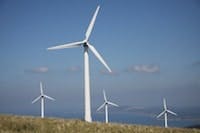The American Council On Renewable Energy (ACORE) released the Southeastern Region Report, the final portion of ACORE’s 6th annual Renewable Energy in the 50 States report. The last in a four-part series, this portion focuses on the renewable energy sector in the 14 Southeastern states (Alabama, Arkansas, Florida, Georgia, Kentucky, Louisiana, Mississippi, North Carolina, Oklahoma, South Carolina Tennessee, Virginia and West Virginia).
The report is a review of state energy policies and programs, investment and market openness as they relate to the current state of renewable energy and its potential for further growth.
“The Southeast certainly has suitable renewable energy resources—like the tremendous biomass resources that are a dominant source of renewable power in the Southeast and now also exported to Europe,” said Lesley Hunter, ACORE’s research and program manager and lead author of the report. “However, the Southeastern states have often been reluctant to create market signals attractive to renewable energy developers and investors –including appropriate incentives and government initiatives.”
Three states of the 14 profiled in this report (North Carolina, Texas, and West Virginia) have binding renewable portfolio standards (RPSs) that would attract investors, create jobs and send positive market signals. Excluding Texas, the nation’s largest producer of wind power, the Southeast only attracted about 10% of the asset finance, venture capital and private equity raised for renewable energy in the country in 2012 (and about 5% in the first nine months of 2013).
While 10 of the 14 states in Southeast Region have no installed wind power capacity, two of the outliers are nationally recognized hubs for wind development: Texas and Oklahoma. To support the growth of the nation’s largest wind power market, Texas is building a $7 billion transmission system designed to facilitate the transmission of about 18.5 GW of wind power from turbines located in West Texas to the population centers farther east in the state.
Louisiana and a few other states have developed emerging distributed generation markets, and Georgia, North Carolina, Texas and Florida are home to larger-scale solar development. Georgia Power plans to have nearly 800 MW of solar power commissioned or under contract with developers by 2016. North Carolina has recently become one of the largest developing solar markets in the nation, ranking second in new solar capacity in 2013.
While the region as a whole lags behind national development trends, a few Southeastern states—notably North Carolina, Georgia and Texas—have emerged as hotspots for growth. “One of the goals of the 50 State Report was to highlight the economic benefits of renewable energy that is supported by state policy. The data in the Report offers the opportunity to compare and contrast and will hopefully encourage states to take advantage of their resources to create jobs and attract investment,” Hunter said.
Renewable Energy in the 50 States: Southeastern Region provides an executive summary for each state on the status of renewable energy implementation at the state-level.
Source: ACORE


